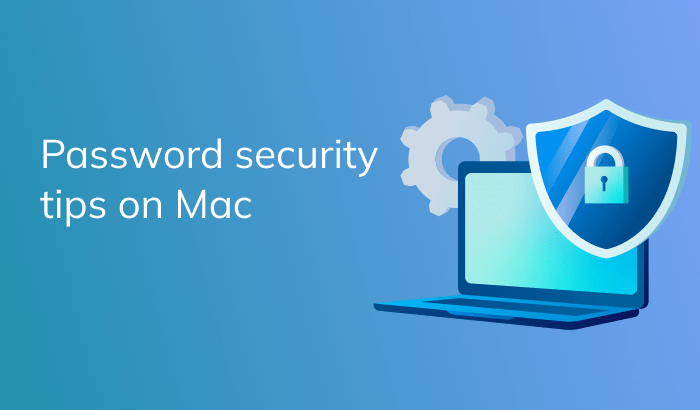Password security tips

Essential Tips for Password Security on Mac
In the digital age, where our lives are intricately entwined with the online world, creating a secure password has become a paramount necessity. Unfortunately, most individuals tend to fall into the trap of using easily guessable passwords, often derived from personal information like birthdates or the names of their loved ones. This casual approach to password creation can lead to being hacked. In this article, we’ll provide you with tips on crafting a robust and impervious password, ensuring your online security remains intact.
Never use such passwords
Before we dive into the art of crafting a secure password, it’s crucial to identify the telltale signs of an insecure one. If you recognize any of the following traits in your current password, it’s high time you take action to bolster your digital defenses:
- Easy letter combinations and phrases
Utilizing simple and widely-known combinations like ‘123456,’ ‘password,’ ‘Iloveyou,’ ‘111111,’ ‘qwerty,’ or ‘admin’ is a glaring red flag. - Personal information
If your password incorporates elements like your name, surname, phone number, or the name of your favorite artist, it’s far from secure. - Short length and lack of complexity
A secure password should contain at least eight characters and include a mix of uppercase and lowercase letters, numbers, and special characters. Anything less is a vulnerability. - Repetitive or predictable patterns
The use of identical or adjacent characters (e.g., ‘222222’ or ‘xcvbnm’) and well-known abbreviations can be effortlessly cracked by hackers.
10 Password Security Tips
Now that you’ve identified the weaknesses in your current password, let’s explore ten indispensable tips to bolster your online security:
- Avoid simplicity and abandon the use of elementary key combinations like ‘qwerty’ or ‘12345.’ Incorporate a blend of letters, numbers, and symbols to create a more intricate and formidable password.
- Use phrase power, for example, rather than relying on single words, opt for a passphrase. The more absurd and unique the phrase, the harder it becomes to crack. For instance, consider using “aflowerunderwater.”
- Consider using a reliable password generator to craft complex, random passwords. If you’re skeptical about their integrity, simply modify a few characters in the generated password to make it uniquely yours.
- Don’t use predictable numbers or constant.: Steer clear of using easily guessable numbers like birthdates or well-known constants such as pi or Fibonacci sequences in your password.
- A robust password should include at least eight characters, encompassing both uppercase and lowercase letters, numbers, and special characters like /? !! <> [] {}. Avoid substituting symbols for obvious words, as in ‘P@$$w0rd.’ An example of a secure password would be ‘X29jk!O{.’
- Avoid entering your passwords while connected to public Wi-Fi hotspots. These networks are often less secure and susceptible to eavesdropping.
- Even if you have a robust password, periodically change it to enhance your security. Cyber threats evolve, and staying one step ahead is essential.
- Use password managers. These tools securely store your data, eliminating the need to remember them, but don’t assume they’re foolproof.
- Use 2-Step verification, especially on critical sites like PayPal. Though it may be slightly inconvenient, it offers a substantial boost to your security.
- Never commit the mistake of using a single password for multiple sites. If one of your accounts is compromised, hackers may gain access to your entire online presence. Each account must have its own distinct password.
In conclusion, your passwords are the first line of defense in safeguarding your online identity. Sharing them with anyone, writing them down in conspicuous places, or storing them on the internet or in a plain text file on your computer are all risky practices that should be avoided. Additionally, creating a strong password is just one aspect of protecting yourself in the digital realm.
